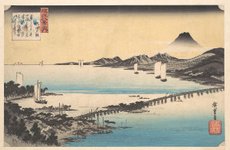
Matsuo Bashō’s Death Haiku

The beauty of Basho’s prose, however, took the negative aspects of old age, loneliness, and death and imbued them with a serene sense of beauty.
Andrew Juniper • Wabi Sabi: The Japanese Art of Impermanence
The haiku poet, Issa, represents this profound experience in one of his most famous poems: The world of dew is the world of dew. And yet, and yet … He wrote this poem after the funeral of his baby daughter.
Gregg Krech • Tunneling for Sunlight: Twenty-One Maxims of Living Wisdom from Buddhism and Japanese Psychology to Cope with Difficult Times
This haiku is a deep reflection on the truth of reality, which is by nature transient and fleeting. When we are unable to accept this truth we become distressed. However, recognition of this truth could at least bring a sense of poignancy to all of us human beings, who inevitably experience and witness it. There is even an aesthetic of this
... See more